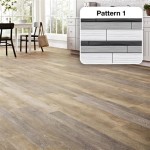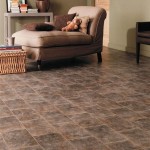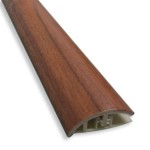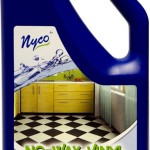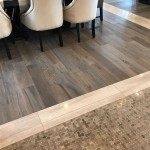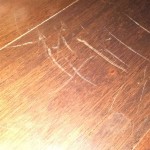Finding The Best Hardwood Floor Finishes
Hardwood floors are a desirable feature in many homes, offering a timeless aesthetic appeal and enduring value. Protecting this investment requires selecting the optimal finish, a critical decision that impacts both the durability and appearance of the floor. The “best” hardwood floor finish is subjective, dependent on factors such as anticipated foot traffic, lifestyle, desired sheen level, and budget considerations. This article will explore various hardwood floor finishes, examining their properties, advantages, and disadvantages to assist in making an informed choice.
Understanding the different types of hardwood floor finishes is paramount. The most common categories include polyurethane (both oil-based and water-based), moisture-cured urethane, acid-cured (Swedish) finish, varnish, shellac, lacquer, wax, and penetrating oil finishes. Each type offers a distinct combination of performance characteristics, application requirements, and aesthetic outcomes.
The selection process should begin with an assessment of the environment where the hardwood floor is located. High-traffic areas, such as hallways and kitchens, require finishes that offer superior abrasion resistance. Rooms with high humidity, like bathrooms and basements, necessitate moisture-resistant options. Understanding the existing hardwood species is also crucial, as certain finishes may react differently depending on the wood's density and composition.
Polyurethane Finishes: Durability and Versatility
Polyurethane finishes are widely recognized for their exceptional durability and resistance to wear and tear. They form a protective layer atop the wood surface, safeguarding against scratches, scuffs, and stains. Polyurethane finishes are available in both oil-based and water-based formulations, each with unique characteristics.
Oil-based polyurethane finishes are appreciated for their ability to enhance the natural warmth and color of the wood. They typically amber or yellow over time, contributing to a richer, more traditional appearance. Oil-based polyurethanes are known for their excellent durability and resistance to solvents and chemicals. However, they have a higher VOC (volatile organic compound) content, resulting in stronger odors during application and a longer drying time. Multiple coats are typically required to achieve the desired level of protection and sheen.
Water-based polyurethane finishes offer several advantages over their oil-based counterparts. They have a significantly lower VOC content, making them a more environmentally friendly and healthier option. They dry much faster than oil-based polyurethanes, allowing for quicker project completion. Water-based polyurethanes are also less likely to yellow over time, preserving the wood's original color. While traditionally considered less durable than oil-based options, advancements in water-based polyurethane technology have significantly improved their abrasion resistance, making them a viable choice for high-traffic areas. Water-based polyurethanes are often more expensive than oil-based choices.
Application techniques for polyurethane finishes require careful preparation and attention to detail. The floor surface must be thoroughly sanded, cleaned, and free of any contaminants. Multiple thin coats are preferable to a single thick coat, ensuring proper curing and adhesion. Proper ventilation is essential during and after application, especially with oil-based polyurethane finishes.
Penetrating Oil Finishes: Natural Look and Feel
Penetrating oil finishes, such as tung oil and linseed oil, offer a different approach to hardwood floor protection. Instead of forming a surface coating, these oils penetrate the wood fibers, hardening from within and creating a durable, water-resistant barrier. Penetrating oil finishes enhance the natural grain and texture of the wood, providing a warm, matte finish.
One of the key benefits of penetrating oil finishes is their ease of application and repair. Scratches and imperfections can often be spot-treated without the need to refinish the entire floor. Penetrating oil finishes are also relatively environmentally friendly, typically containing low or no VOCs. They present a natural, breathable finish, allowing the wood to expand and contract with changes in humidity.
However, penetrating oil finishes are generally less durable than polyurethane finishes and require more frequent maintenance. They are susceptible to water stains and require regular re-oiling to maintain their protective properties. Penetrating oil finishes are best suited for low- to medium-traffic areas where a natural, rustic aesthetic is desired.
Applying penetrating oil finishes involves saturating the wood with the oil, allowing it to penetrate for a specified period, and then wiping away any excess. Multiple coats are required to achieve the desired saturation and protection. Proper drying time is crucial between coats to prevent tackiness and ensure optimal performance.
Specialty Hardwood Floor Finishes: Acid-Cured and Moisture-Cured Urethanes
In addition to polyurethane and penetrating oil finishes, several specialty hardwood floor finishes offer unique characteristics and benefits. Acid-cured (Swedish) finishes and moisture-cured urethanes are two notable examples.
Acid-cured finishes, also known as Swedish finishes, are known for their exceptional durability and resistance to chemicals. They form a very hard, durable surface that is highly resistant to scratches and abrasions. Acid-cured finishes typically have a low sheen and highlight the natural grain of the wood. However, they contain formaldehyde, a known carcinogen, and require professional application due to their toxicity and flammability. Acid-cured finishes are gradually being replaced by more environmentally friendly alternatives.
Moisture-cured urethanes are single-component finishes that cure by reacting with moisture in the air. They are known for their excellent flexibility and resistance to cracking and chipping. Moisture-cured urethanes are often used in areas subject to movement or vibration. They provide a durable, water-resistant finish that can withstand heavy use. However, moisture-cured urethanes are sensitive to humidity levels during application and require careful preparation to ensure proper adhesion. They also have a strong odor and require professional application.
Choosing between acid-cured and moisture-cured options depends on the specific requirements of the project. Acid-cured finishes are preferable for areas where chemical resistance is paramount, while moisture-cured urethanes are better suited for environments with fluctuating humidity or movement.
Beyond these primary categories, other finish options are available, albeit less common in contemporary applications. These include varnish, shellac, lacquer, and wax. Varnish offers a durable, glossy finish but can be prone to cracking over time. Shellac provides a natural, warm tone but is susceptible to water damage. Lacquer dries quickly and provides a smooth, even finish but lacks durability compared to other options. Wax offers a natural, low-sheen finish but requires frequent maintenance and provides limited protection against scratches and stains. These older finish types often are favored for antique restorations or very specific aesthetic goals.
The long-term maintenance of a hardwood floor is directly related to the type of finish applied. Regular cleaning with appropriate hardwood floor cleaners is essential to remove dirt and debris that can scratch the surface. Avoid using harsh chemicals or abrasive cleaners that can damage the finish. Re-coating or refinishing may be necessary periodically to maintain the floor's appearance and protective qualities. The frequency of re-coating depends on the level of traffic and the type of finish used. Penetrating oil finishes typically require more frequent re-oiling than polyurethane finishes.
Selecting the best hardwood floor finish requires careful consideration of various factors, including durability, aesthetics, environmental impact, and maintenance requirements. By understanding the properties and characteristics of different finish types, homeowners and contractors can make informed decisions that will protect and enhance the beauty of their hardwood floors for years to come. Thorough sanding, proper application techniques, and consistent maintenance are all vital to achieving a durable and attractive finished product.

Hardwood Floor Stain Colors Choosing The Best Options Flooring America

Floor Sealer And Finish Guide Bona Com

Best Floor Varnish For Wooden Floors The Flooring Group

What Are Gloss Levels In Hardwood Floors Do I Want Sheen Y Wood Reallyfloors America S Est Flooring

Best Stain For Red Oak Floors How To Choose Colors Flooring Hydrangea Treehouse

5 Tips For Choosing A Hardwood Floor Color Justourbackyard Com

Choosing The Best Finish For Your White Oak Hardwood Floors A Comprehensive Guide Giant

The Easy Way To Identify Your Hardwood Floor Finish Choose Best Polish

What Hardwood Flooring Finish Is Best Ub Hardwoods Blog

Hardwood Floor Wood Planet
Related Posts

